The intertidal zone, also referred to as the littoral zone, is the area where the ocean meets the land between high and low tides. This is one of the most important marine areas on our planet, but constitutes little studied ecosystems which are vulnerable to disturbances.
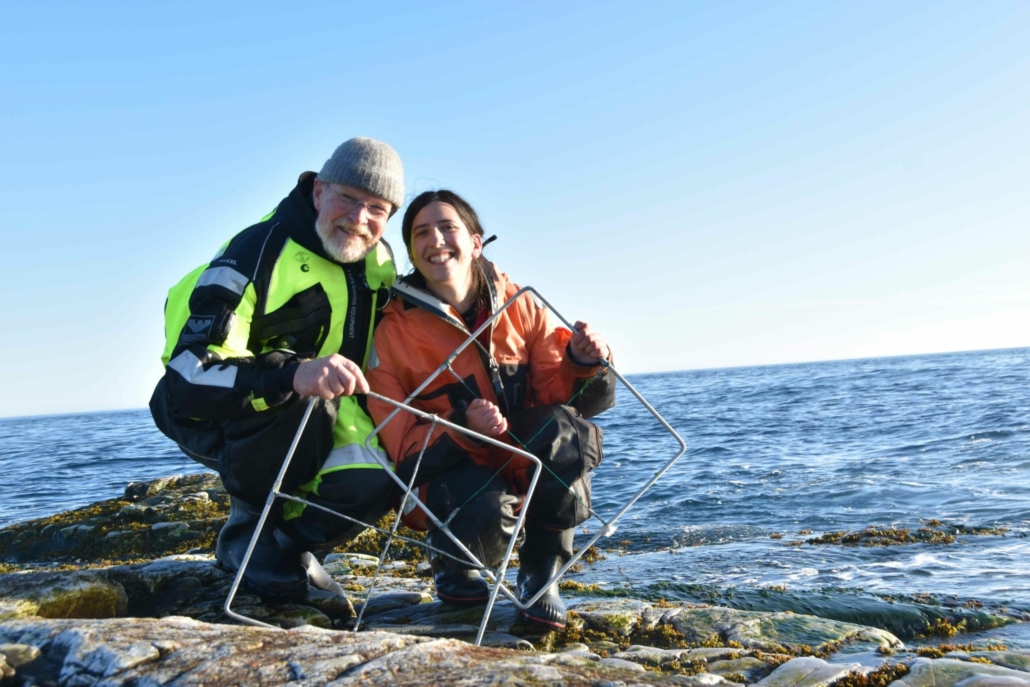
Haakon Hop and Lauren Wiesebron getting ready for frame-sampling at Mitraskjæret. Photo: Haakon Hop / Norwegian Polar Institute
Greening of the intertidal zone because of climate warming and less sea ice
Warming temperatures and a reduction of sea-ice scour have opened the Arctic intertidal zone as habitat for colonization by both seaweeds and marine invertebrates. Indeed, large increases in the biomass of seaweeds and invertebrates on Arctic coasts have already been documented in the past decades and are predicted to continue. To understand the ramifications of this widespread ecological change in the Arctic intertidal, one needs to examine species-specific responses and how these drive inter-species interactions and ecosystem dynamics. Information about Arctic intertidal communities across environmental gradients are few, and little is known on species adaptability, biotic interactions, and regional variability in population and community structure, all of which contribute to ecosystem stability.
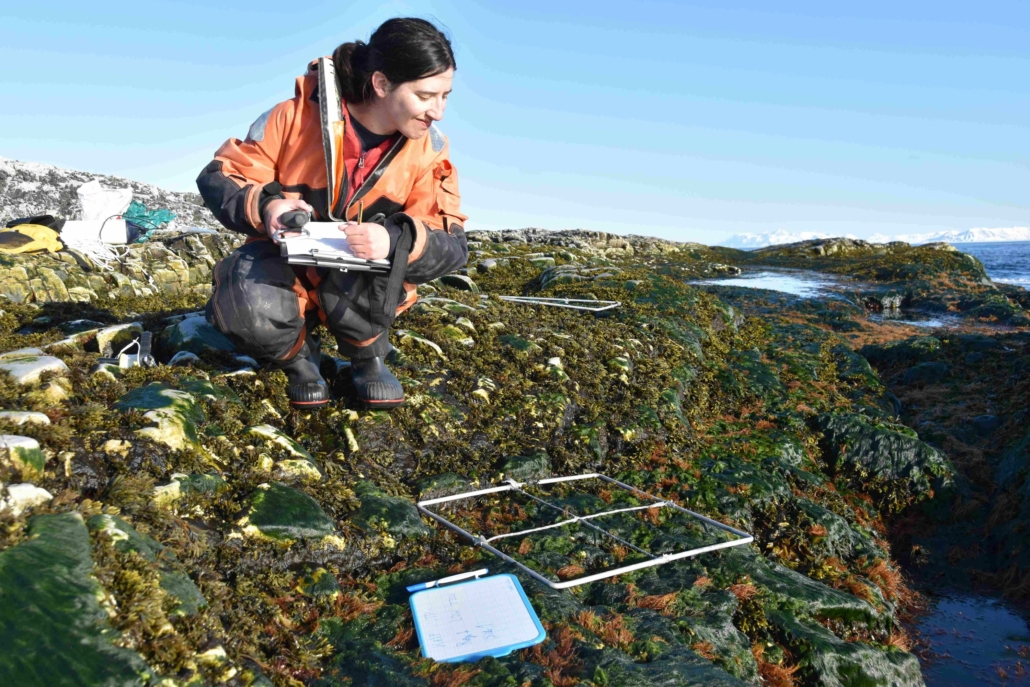
Lauren Wiesebron carefully registering algal coverage within frame before sampling. Photo: Haakon Hop / Norwegian Polar Institute
Intertidal locations sampled along an environmental gradient in Kongsfjorden
The intertidal zone is variable based on latitude and location. In Kongsfjorden, Svalbard, the tidal variation is up to 1.5 m. We examined the Arctic intertidal ecosystem along an environmental gradient in Kongsfjorden in early June. This included sampling of the intertidal zone at five hard-bottom locations from outer fjord, Mitraskjæret outside Kongsfjorden near Kapp Mitra, to the inner fjord at Colletthøgda near the tidewater glaciers. These locations had been sampled by divers in 1996-98, to study the intertidal as well as the sublittorale zone for both flora and fauna and same locations were surveyed for macroalgae in the BlueARC project in May 2024. In addition, a recently exposed intertidal zone at Austneset near the retreating Blomstrand glacier was investigated for new occupants.
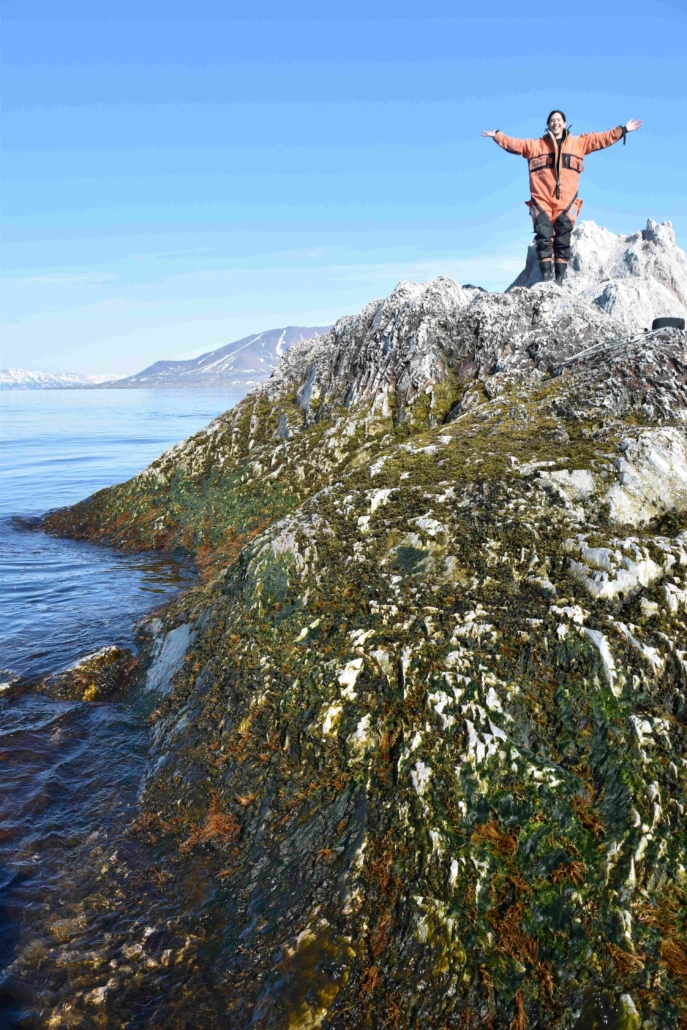
Lauren the Redeemer at Rio de Hansneset. Photo: Haakon Hop / Norwegian Polar Institute
Effects of wave exposure and sea ice on intertidal communities
Our objectives were to study the effects of abiotic forcing (waves and sea ice) on intertidal communities and relate to the earlier studies. Sampling was conducted quantitively by means of 50×50 cm quadrates placed in triplicate at low, medium and high tidemarks. Seaweeds, which mostly included the rockweed (Fucus disticus), were collected together with associated fauna. Mats of stringy green and brown turf algae were also present and have likely increased because of less ice-scouring. Collected samples will be further analysed in the laboratory for taxonomy and genetics. Physical variables were measured and environmental-DNA samples (e-DNA) collected from each location.
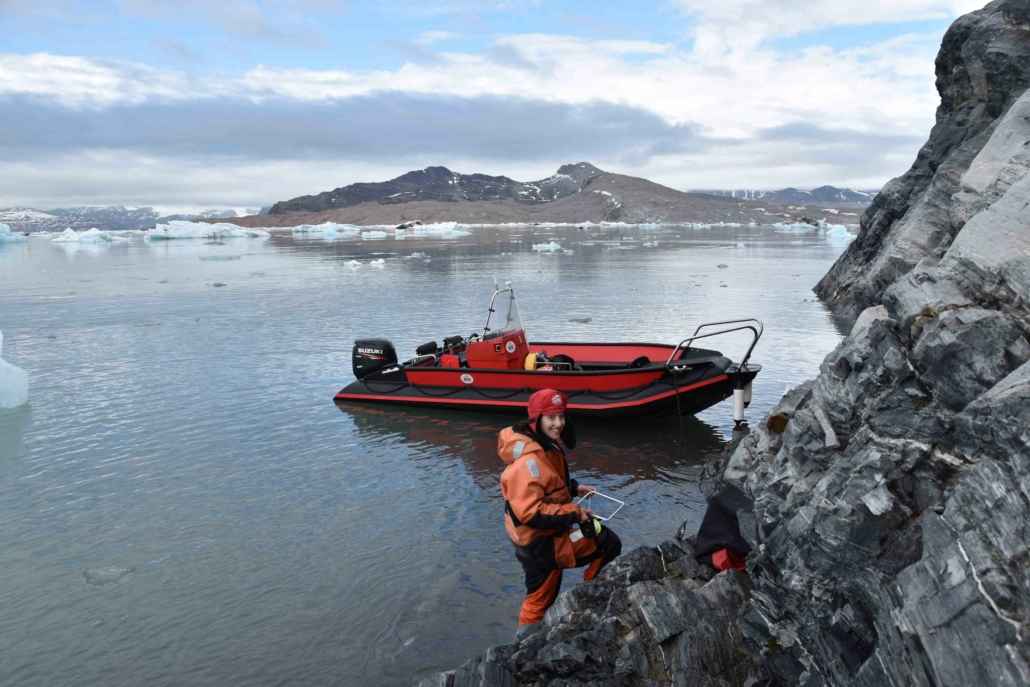
Intertidal zone at Colletthøgda – not much there! Photo: Haakon Hop / Norwegian Polar Institute
Intertidal zone vulnerable to human pressures
The intertidal zone is of great environmental concern, because it is largely affected by human pressures. Anything floating on the ocean will eventually end up on a beach, unless it sinks on the way, and this includes oil, plastics, garbage, and exotic species attached to debris. Closer to urban areas, the original intertidal zones have been grandly altered. In Kongsfjorden, most of the intertidal zone is still in a pristine condition and, thus, well suitable for study of ecosystem resilience and effects of climate change.
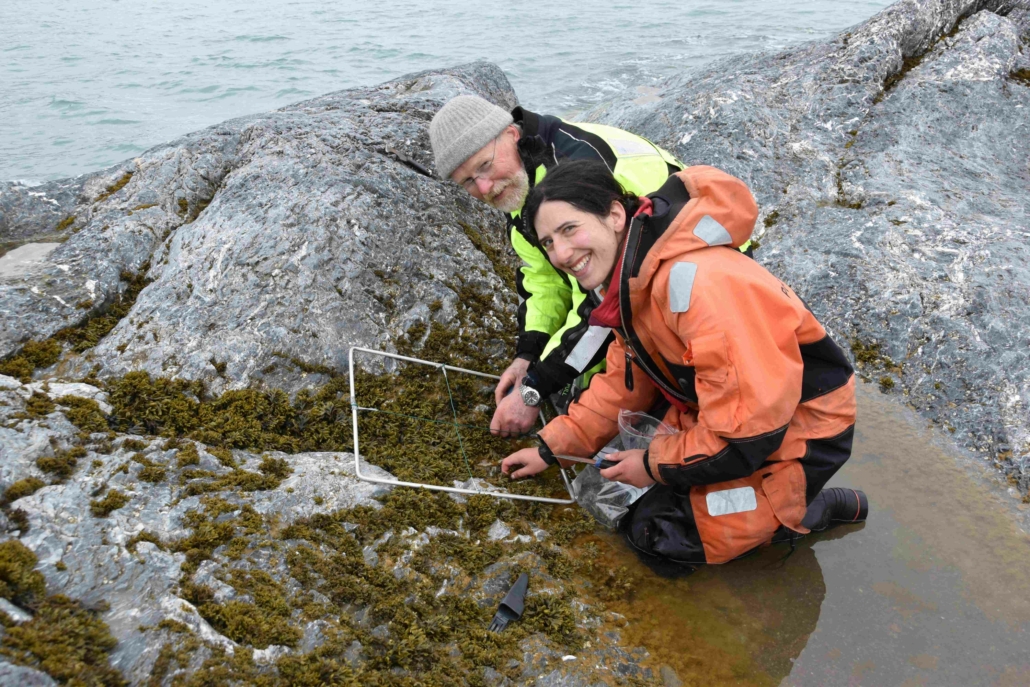
Sampling the new colonizer rockweed (Fucus disticus) at Austneset, near Blomstrandbreen. Photo: Louise Ladefoged Paulsen / Univ. Copenhagen
Project leadership and organisation
This project was led by post doc. Lauren Wiesebron, University of Oslo, based on an Arctic Field Grant (Research Council of Norway) and assisted by Haakon Hop, Norwegian Polar Institute, which also supported the project logistically. Sampling permit was granted by the Governor on Svalbard.





